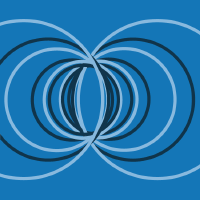Topic Menu
► Topic MenuTopic Editors


Covariance, Objectivity and Evolution Equations in Either Classical or Quantum Gravity and Quantum Mechanics
Topic Information
Dear Colleagues,
Covariance, objectivity, and evolution equations are key aspects of classical gravity, quantum gravity (CG and QG), and quantum mechanics (QM) alike. In fact, it is generally agreed that any physical theory underlying discrete or continuum systems should have an intrinsic, either classical or quantum, Hamiltonian structure. On the other hand, that same structure should have an objective character, i.e., it should hold—in principle—in a coordinate-independent setting. This means that, correspondingly, all theories should have an objective character as well, i.e., be independent of the observer. For relativistic theories, such a property is fulfilled provided all classical and quantum observables are set in terms of 4 tensors, i.e., they are manifestly covariant. Manifest covariance is therefore the property that warrants validity of the principle of general covariance in all the aforementioned physical contexts.
However, besides manifest covariance, further common crucial aspects arise. They include the following relevant issues:
a) Analogies between QM and QG;
b) The construction of classical and quantum variational principles;
c) Implications of manifest covariance in CG, QG and QM.
In particular, further related specialized topics, of special interest both for QM and QG, include:
d) The evolution form of the quantum-wave equations;
e) The conditions of validity of the Born identity;
f) The conditions of validity of generalized Heisenberg uncertainty principles;
g) The conditions of validity of quantum logic;
i) The problem of quantum regularization.
Properly understanding these issues becomes increasingly urgent and meaningful. Nevertheless, the identification of the relevant quantum phenomenology depends very much on the precise choice of the model of quantum gravity to be adopted as well as the theory of quantum mechanics implemented for the description of discrete systems. Therefore, the choices of quantum gravity and quantum mechanics models become crucial by themselves. The goal of this Special Issue is to offer a privileged stage for a specialized debate on the subject, with the purpose of advancing tentative answers to these fundamental questions. For this purpose, review articles, as well as original research works, are welcome to be presented.
Prof. Dr. Massimo Tessarotto
Dr. Claudio Cremaschini
Topic Editors
Keywords
- classical and quantum gravity
- variational principles
- Hamiltonian theory
- covariance and manifest covariance
- quantum regularization of singular solutions
- Born rule
- Heisenberg uncertainty principle
- quantum wave equation
- quantum logic in QM and QG
- stochastic effects in QM and QG
- quantum trajectories in QM and QG
Participating Journals
| Journal Name | Impact Factor | CiteScore | Launched Year | First Decision (median) | APC |
|---|---|---|---|---|---|

Entropy
|
2.1 | 4.9 | 1999 | 22.4 Days | CHF 2600 |

Galaxies
|
3.2 | 4.9 | 2013 | 19.2 Days | CHF 1400 |

Quantum Reports
|
- | 3.3 | 2019 | 18.1 Days | CHF 1400 |

Symmetry
|
2.2 | 5.4 | 2009 | 16.8 Days | CHF 2400 |

Universe
|
2.5 | 4.3 | 2015 | 21.8 Days | CHF 2400 |

MDPI Topics is cooperating with Preprints.org and has built a direct connection between MDPI journals and Preprints.org. Authors are encouraged to enjoy the benefits by posting a preprint at Preprints.org prior to publication:
- Immediately share your ideas ahead of publication and establish your research priority;
- Protect your idea from being stolen with this time-stamped preprint article;
- Enhance the exposure and impact of your research;
- Receive feedback from your peers in advance;
- Have it indexed in Web of Science (Preprint Citation Index), Google Scholar, Crossref, SHARE, PrePubMed, Scilit and Europe PMC.

